He must be euthanized.
Severe osteoarthritis is devouring him. The condition eats him alive, from his swollen fetlock joints, between the third metacarpus and the proximal phalanx of the horse’s legs, down to his trembling knees. When he walks, his body mass of more than 900 pounds barely holds up. He does not look like a horse that has raced twice on the Hipódromo Camarero racetrack, in March and April of this year.
His bones don’t cross any finish line. Osteoarthritis is an explosive combination on the legs: inflammation, pain, and reduced movement of the affected joint. There is no cure, experts say.
That is why he’s no longer in the stable area of the only horse racing circuit in Puerto Rico. Although he ran there, his condition worsened more and more. Now his steps are slow. His hind legs falter. They cause a painful dance in his hind legs and multiply the chances that the beast will fall to the ground at any moment.
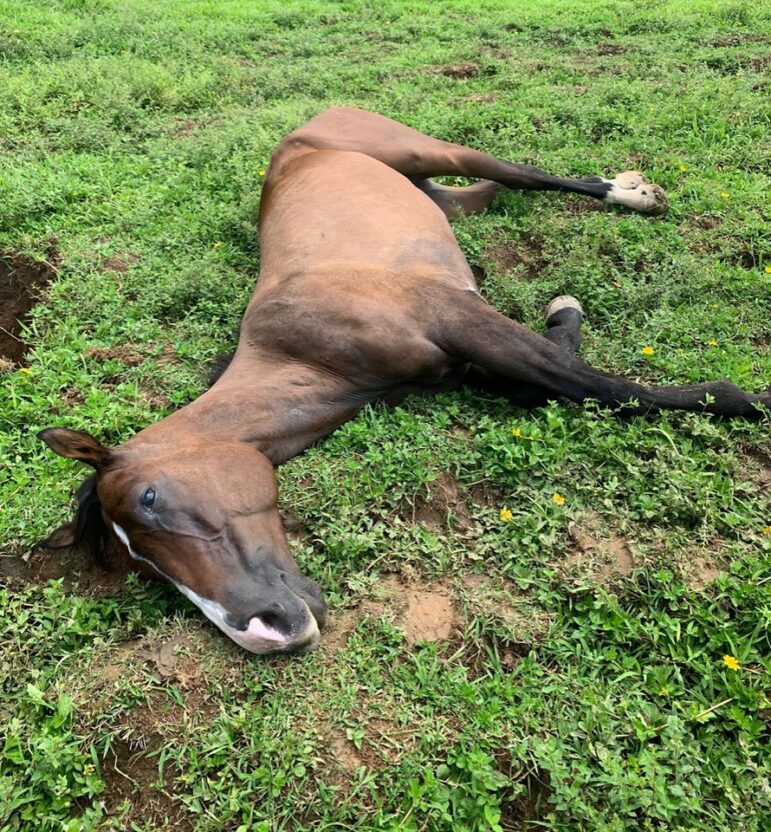
Courtesy photo
In Puerto Rico there is a serious problem with the number of injuries sustained by active horses that should be allowed an extended rest or retirement. Between January and May of this year, 108 horse deaths by euthanasia were registered in Camarero, of which more than 55% were due to serious fractures in the horses’ extremities. And that is not a recent issue, in 2021 the Center for Investigative Journalism (CPI, in Spanish) investigated the problem of injured and mistreated horses running in races. Last year, 94 horse deaths due to euthanasia were documented in that same period and more than 55% due to leg fractures.
There have been at least 675 euthanasias reported in Camarero since 2021. At least 379 horses on that official list of the horse racing authorities had fractures.
In this final stretch, death comes soon to Ruler of the Nile. He is an eight-year-old thoroughbred. He was born in March 2015 and within eight months he was sold for $240,000, a significantly high sum for a colt under one year old. In 2017, already more mature, his value increased to $1 million, and he was sold at the Ocala Breeders’ Sales Company auction, one of the most important in the United States.
He won convincingly in his debut, carrying the most prestigious Puerto Rican jockey in the United States, John Velázquez. But soon after he was injured, and he was castrated so as not to reproduce his lineage. He was downgraded and his stock plummeted, even as he continued to run well. In June 2021 he made his last appearance in the United States when he won a race at the mecca of horse racing, Churchill Downs Racetrack, in Louisville, Kentucky.
At that event, he was acquired by trainer and owner Oscar Barrera III, for the sum of $32,000. That is part of his competition history, known in equestrian slang as “past performances.” With this document, the bettors analyze the possibilities of the animal in each race. It’s there where information is included about the horse’s training, the jockeys who have ridden it, its trainers, their recorded times in each race and whether they have been “claimed” (sold) after a race.
Ruler of the Nile did not return to the track under Barrera’s coaching. He was sent to Puerto Rico, where he ended up racing nine times at the Hipódromo Camarero between November 2021 and April 2023. He won three of his six starts last year. But today, if he wasn’t given a strong dose of medication and a little push to provoke him, he wouldn’t walk. Only the drugs transform him into a horse with a strength that he no longer really has.
Feet out of the stirrups
Before reaching this point, Ruler of the Nile belonged to Eric Aquino’s Aquino Stable, and his last trainer was Eduardo Falcón, who appears on the list of seven trainers identified by the Horse Racing Sports Bureau for substance use in horses who tested positive for doping through May of this year. These samples identify illegal substances, as well as those that are allowed up to a certain limit.
Falcón applied a dose of phenylbutazone to horse Greelys Charm, from the Carmen Anita stable, who finished last in the seventh race on January 21. It is a non-steroidal anti-inflammatory that is used to reduce chronic pain, including arthritis symptoms such as those experienced by Ruler of the Nile. It is commonly applied to horses to reduce pain in their extremities before a race, but it increases the chances of fatal injuries, such as fractures. The horse may be injured, but under the effects of this substance it does not feel the real impact on its legs, so they push themselves far beyond what their body can handle.
According to the Racing Plan, before each event “the horse registered to participate […] must be transferred for [a physical] examination by the official veterinarians” of the Horse Racing Sports Bureau. It is not an in-depth examination, but rather a quick inspection, to confirm that it is the correct horse, that it does not show a limp, among other general details. A horse in poor physical condition can easily make it to the track and run if they look good before stepping onto the oval. This happened to Cumpleañero, who participated in the eighth race on August 5 and barely reached the finish line, according to the daily report from the horse racing authorities.
Doping tests, on the other hand, are not performed on all horses. These samples are taken after each race only from the winning horse, according to what is established by the Controlled Medication Regulation, which has not been updated since 2016, although public policy at the federal level has undergone multiple changes in that period, especially regarding the regulations of medication and the protection of horses.
The Horseracing anti-doping and medication control program is an example. When it comes to an event for reclaimable horses (which are sold for a certain amount of money at the end of the race, as happened with Ruler of the Nile at Churchill Downs), the horses that are bought are tested for doping. Likewise, the equestrian jury, responsible for supervising operations during the races, has the authority to identify any other horse that raises suspicions of being drugged or in poor physical condition due to its performance on the track. It is an intuitive exercise.
General inspections are carried out in stable 11 prior to each race and Lasix (furosemide) is supplied, the only medication that has a special regulated program.
Photos by Ricardo Arduengo | Center for Investigative Journalism
“Every horse has something [to attend to medically],” says an experienced source within the horse-racing industry. He is a veteran who has experienced the dark sides of the business and knows it like the palms of his hands after years working in that world. He doesn’t want to give his name out because of the repercussions he may face.
“One of the common tricks is that there are medications that by regulation must be taken at a certain time before the race. So, there are trainers who ignore the regulations in terms of those times, medicate closer to the race and reduce the amount of medication,” the source explains, referring to medications that are allowed within established limits. “By having less amount of medication, the horse can come out clean. Stronger [even illegal] medications may also be given at times when the horse is not running. Everything has its trick because nobody supervises you in there [in the stables],” the expert said.
In the past five years, Greelys Charm is Falcón’s only positive case identified by the Horse Racing Sports Bureau, the agency in charge of overseeing equestrian operations under the umbrella of Puerto Rico’s Gaming Commission. This unit performs an average of 2,200 doping tests per year.
From January 2018 to May 2023, the Gaming Commission identified 70 positive cases for multiple substances at the Hipódromo Camarero. These cases correspond to58 different stables and 44 different trainers (13 of them repeat offenders), suggesting that substance misuse is widespread.
The prize for each race is distributed among the top-six place finishers: 58% for first place, 20% for second, 10% for third, 6% for fourth, 4% for fifth and 2% for sixth. Each trainer, of course, benefits from the distribution of each prize. The prizes fluctuate from $6,000 to $21,000, in the case of regular races, and the special events (classics in equestrian slang) reach $75,000. A horse owner, for example, can get around $40,000 if they win a special race with the highest prize, while the trainer gets a portion of that amount.
Prior to Falcón, Samuel “Sammy” García trained Ruler of the Nile. García’s horses have also tested positive for illegal substances. He is a repeat offender; he has been suspended and has had to pay fines for not appearing before the horse racing authorities. The Horse Racing Sports Bureau’s documents include his name and the case of the horse named Inspector Frost, who got applied with lidocaine before he won the first race on June 20, 2022. The horse won the race, with a prize of $9,016, but was disqualified to the last position after being subjected to the sampling process. The horse Código Veintiuno, a $6,000 prize winner in the fifth race on December 30, 2022, under García’s tutelage, tested positive for methocarbamol.
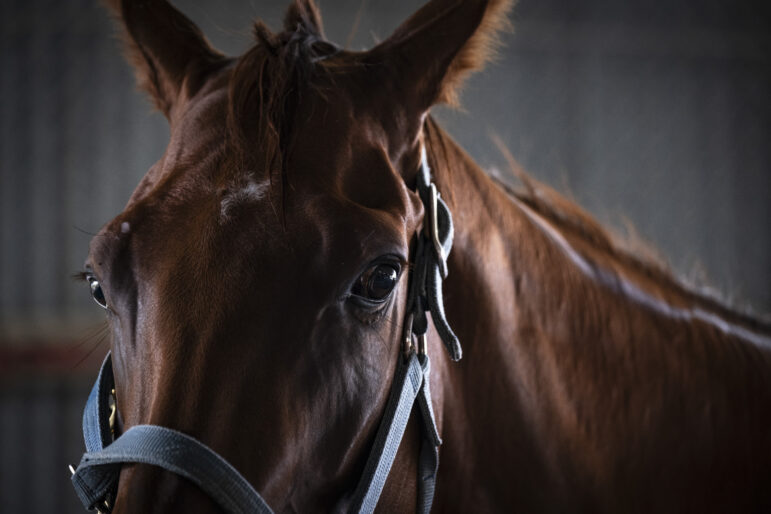
Photo by Ricardo Arduengo | Center for Investigative Journalism
Lidocaine is a widely used racing anesthetic for horses with joint problems. It is regulated and its improper use carries a suspension that may last from 15 days and up to a year, in addition to a fine, according to the Penalty Guide of the Association of Racing Commissioners International (ARCI). García was given a six-month suspension and a $1,500 fine for that lidocaine case. Methocarbamol, on the other hand, is a muscle relaxer.
According to the ARCI Penalty Guide, the misuse of this substance in the horse racing industry also carries financial penalties and suspensions, at the discretion of the horse racing authorities. In this other case, García is undergoing administrative proceedings with the Horse Racing Sports Bureau, which has a full hearing scheduled for September.
According to the ARCI Guide, injectable anesthetics are often abused when used as nerve blocking agents. The CPI tried to obtain a reaction from García and Falcón through the Trainers Association, but they had not responded as of press time.
The problem of drugging horses to make money and bets is not unique to Puerto Rico. In 2021, for example, famous North American trainer Bob Baffert was suspended for two years from the Churchill Downs racetrack after winning the Kentucky Derby with the horse Medina Spirit. He tested positive for betamethasone, a substance that is allowed but cannot be in the horse’s system on race day. This summer, authorities at the Louisville, Kentucky, racetrack, where Ruler of the Nile last raced before coming to Camarero, extended Baffert’s suspension through 2024.
Ruler of the Nile died at a farm outside the racetrack this month. Euthanasia won the duel over arthritis in the final stretch.
Changing Leads is a similar case, but to the extreme. It is not a horse in the same category.
He has multiple fractures to his legs, from the knees to the fetlocks and sesamoid bones that are in his forelimbs. He participated in eight races during the first six months of 2023. He arrived in Puerto Rico from the United States in October 2018. Since then, he has raced 79 times at the Hipódromo Camarero. And he was lucky.
The galloping trick
An experienced authority of horse racing culture who spoke on condition of anonymity is uncomfortable with what is happening. He explains that many drugs that are used successfully to “relieve specimens” suffering from serious injuries are not approved or regulated by the US Food and Drug Administration (FDA).
“The vast majority of products that test positive are made in the USA,” he says, referring to products recognized in ARCI guidelines. He confirms what several other sources have shared with the CPI, that beyond buying a South American product because it is cheaper than one approved by the FDA, it can also be beneficial when using it excessively during treatments in the stables, where they get the horses ready for the races and where they also take care of any physical detail of the animal. But there are no doping tests carried out on the horses and the work is hardly supervised by the government authorities and the company that operates the racetrack.
The source mentions the case of Gilberto Escobar, a trainer at the Hipódromo Camarero arrested by agents from the Immigration and Customs Enforcement Service and Department of Homeland Security Investigations (ICE-HSI) for smuggling medicines for horses in 2016. According to the indictment, he tried to enter multiple substances from Panama: Norandren 50 (anabolic), Ganabol 50 (anabolic), Nabolic (anabolic), Nabolic Strong (anabolic), Estimil SI (muscle stimulant), CH 77 (stimulant), Batacas (relaxing and muscle tonic ), Chinfield coagulant (antihemorrhagic), Tonicor RE (respiratory stimulant), Neuromax 1.5% (neurolytic), Clenpulmin (bronchodilator), MV Chinfield (respiratory stimulant), Hepato Factor A (normalizes, stimulates and protects liver function), Arterol (bronchodilator), and Bronquinort (bronchial antiseptic).
Escobar is a trainer and is active today. He pleaded guilty in 2017 and was sentenced to five years of supervised release.
The federal agency told the CPI that two common substances within the horse racing industry Ketamine and Xylazine, both regulated drugs. The first is an anesthetic and the second is a muscle relaxer. “Ketamine was smuggled into the 2016 investigation,” federal authorities said, referring to the Escobar case. “Both Ketamine and Xylazine are examples of drugs that can be legally administered to horses but also have a history of abuse or misuse,” they said.
Following Escobar’s arrest, ICE along with the FDA executed a federal search and seizure warrant in the Hipódromo Camarero’s stables 5 and 23, where several non-FDA approved drugs were found and confiscated.
While conducting routine inspections of cargo and passengers, Customs and Border Protection has also found multiple unapproved foreign drugs used in Puerto Rico’s equine industry. “These drugs include, but are not limited to, Tonicor, Fosgal, Hepato Factor A, Pregazole, Guayacryl, Hepatico 500, Clenpulmin,” federal authorities stated.
“Although there are exceptions, typically, veterinary drugs manufactured outside of the United States are considered ‘unapproved foreign drugs’ and illegal. This means that any person or business that imports these unapproved foreign drugs will be in violation of federal laws,” they added.
Most of those products that were seized by federal authorities in the Escobar case were from the Argentine brand Chienfield. According to the source, these continue to arrive in Puerto Rico and continue to be used.
“That (product) arrives and is sold in the stables area. The Argentine brands Chinfield and Nort are widely used; Tornel, from Mexico; and more medicines from South American countries. They are cheaper and of better quality,” says the source. “A horse comes to you from the United States. You bought it at a good price because they have a physical issue. You take the legal route; you get the horse X-rayed and he runs well two or three times. When he starts to limp, that’s where these medicines I’m telling you about come in to relieve him. That’s until you have to put the full first-aid kit in him.”
The source said it is difficult not to be tempted to use this type of medication, “because you must compete. If you don’t race, you starve at the racetrack. Obviously, there are horses that need certain help, but not making them race them with 10 different medications like they do here [in Puerto Rico].”
He clarifies that when he talks about drugs, he’s not referring to cocaine or heroin. He fears for the repercussions that he and his family could face if he revealed his identity speaking about this issue, because “the chain that moves this is big.” It is so big that it is not limited to horse racing, because its tentacles, he says, reach the postal service system, the Paso Fino culture, and even cockfights.
He acknowledges that he handles creatine products, as well as other substances to eliminate lactic acid from the horse’s muscles and to improve oxygenation. He gets them injectables from abroad. He talks about the Dominican Republic. He explains that there are even substitutes for lidocaine, such as P-Block or Sarapin, a substance used to relieve pain and inflammation in the joints of animals before racing.
“Instead of using them in powder form, you inject it, and the product gives them a boost, because they perform better. And more so if you know how to mix them with other things and apply them at the right time. You can get American ATP, but I’m one of those who thinks that this is not as effective as the Argentine Chinfield.”
ATP Chinfield, cheaper than products from the United States, is a muscle energizer and, like other substances, is used days before the race. “Orphenadrine and other medications, you use those before the race. You work the horse with it [in training], so that it exercises, and you take them off five or four days before.”
This is how doping tests are avoided at the racetrack, he says.
From regulation to execution
Juan Carlos Santaella, executive director of the Horse Racing Sports Bureau, does not believe that there’s a black market for illegal veterinary medicines and other drugs to improve horse performance in the stable area of the Hipódromo Camarero. But he acknowledges that his office has not made any official or surprise visits to gather information on what is happening in the stables area. The last time that the Horse Racing Sports Bureau carried out an operation of investigative nature in the stable area was in March 2021, when Santaella was not yet executive director. Orlando Rivera Carrión held the position at that time. When Rivera Carrión resigned, he said on national radio that he feared for his life. He refused to speak to the CPI.

Photo by Ricardo Arduengo | Center for Investigative Journalism
“I’m not aware [of that]. I haven’t taken action to tell you what is or is not there [in the stables]. At some point an exercise was carried out in the stables area (March 2021). And we have talked about doing something similar this year,” said Santaella.
He assured that the sampling process is “very rigorous,” but recognized that there are limitations, particularly economic ones.
“I don’t interfere. [The samples] go to a laboratory in the United States that is certified by the entire North American horse industry. The positive cases that arrive are addressed,” added Santaella, referring to what the regulations say.
“There was a case of a horse from the Illuminati stable. He went out with an injury, and they sent me a picture saying the horse was down with an injury and that he couldn’t stand up. The owner, irresponsibly, had not gone [to attend to the horse]. We filed an administrative case against him, and the police were called. And that is the message that I want to deliver, that there are going to be consequences regardless of whether we’re friends,” he pointed out.
Mónica Andreu Martínez, chemical adviser to the Gaming Commission since 2007, agrees with Santaella. “This is a well-regulated environment, unlike the perception people out there have,” she says. “In 2020 there were nine positives in total and I sent 2,282 samples,” she said.
Although the number is significantly low compared to the total number of samples, the nine cases that Andreu Martínez refers to involve nine different trainers: Máximo Gómez, Sammy Figueroa, Víctor García Orozco, Ghislaine Enríquez, José Dan Vélez, Edwin Texidor Rosa, José Báez Iglesias, Raymond Morales, and Christopher Rojas. The cases also involve nine different stables: Comerío, Majestic Racing, Denian, HG Racing, Torres-Pagán, Shark Stable, Carlos Oyola, MaDCo and Ramz Racing. Although there were few cases, the fact that they are in different stables and with different trainers suggests that this is a widespread issue.
There is a protocol after each race to test the winning horse or any other horse for doping, according to the discretion of the horse racing authorities, but this procedure does not guarantee the purity of the processes.
Andreu Martínez is aware of the limitations of staff and structures to consistently supervise operations in this area. She handles the samples with the help of an assistant and believes the established process is effective, despite it not being preventive. She accepted that there is no mechanism to monitor medication processes in the stable area, where there are currently some 1,500 horses.
The Horseracing Integrity and Safety Authority’s (HISA) Racetrack Safety Program, which took effect on July 1, 2022 in the United States, has made progress. In its first year of implementation, national equine safety standards and racetrack accreditations were applied with the aim of improving the welfare of animals and riders, minimizing injuries, according to the organization’s regulation.
While some jurisdictions, such as Texas and Nebraska, resist HISA policies in court, Camarero’s case falls into limbo in that discussion. HISA does not have jurisdiction over the horse racing industry in Puerto Rico, a US colony. Camarero, which operates the only racetrack on the island, has not spent a penny in 2023 to give the horses a dignified retirement.
Between 2019 and 2022, horse racing in Puerto Rico generated more than $500 million in sales, according to information provided by the Gaming Commission.
Away from this scene, fans pick their horses under a façade of normality. To do this, they analyze the data offered by the traditional equestrian magazine. Bettors use the intuition that experience gives them and even “good faith tips.” But none of these things are enough to reveal the real conditions of certain horses, on which racing aficionados naively bet their money every day at the races. Sometimes, luck has a secret and perverse formula.


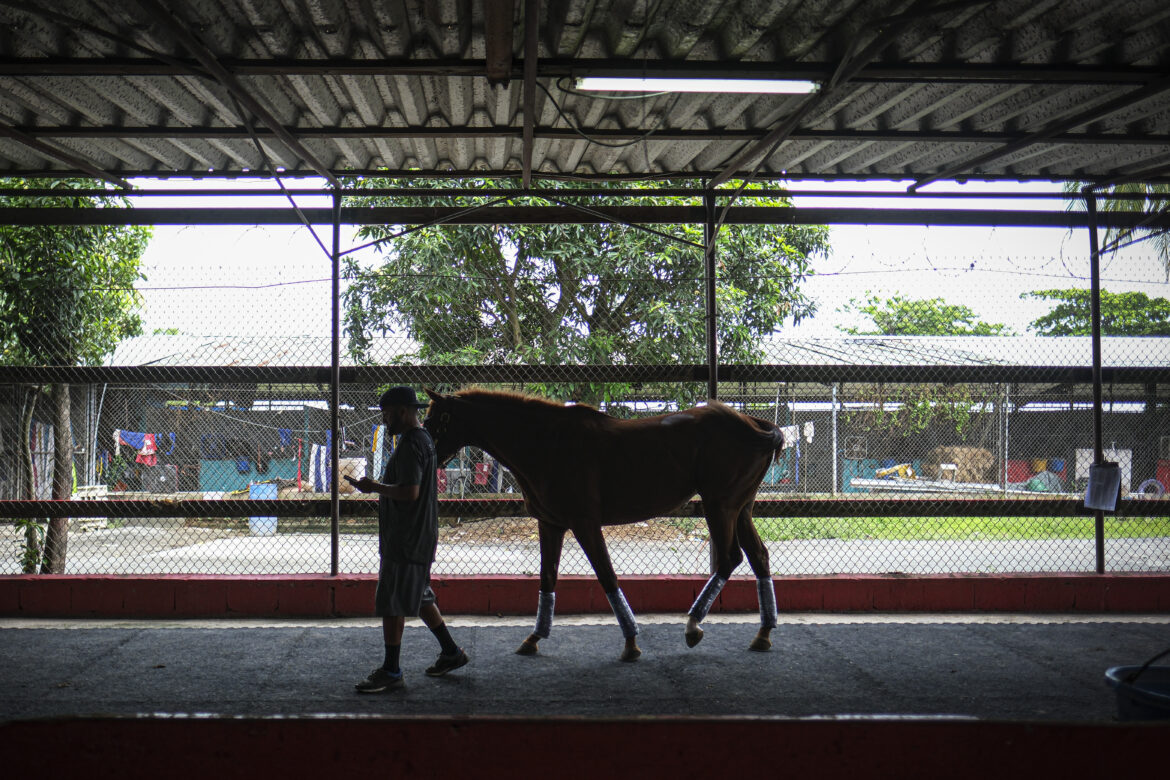
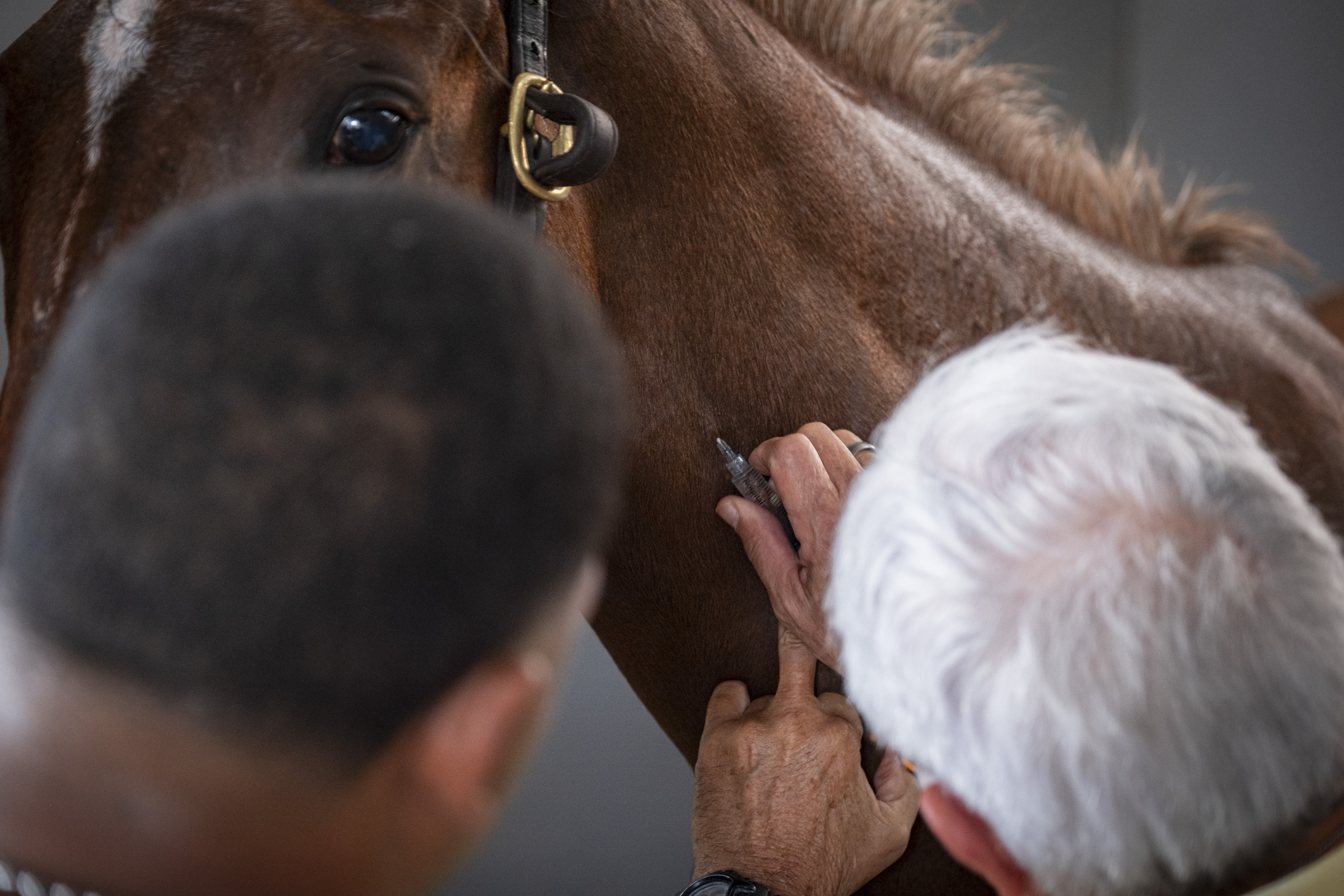
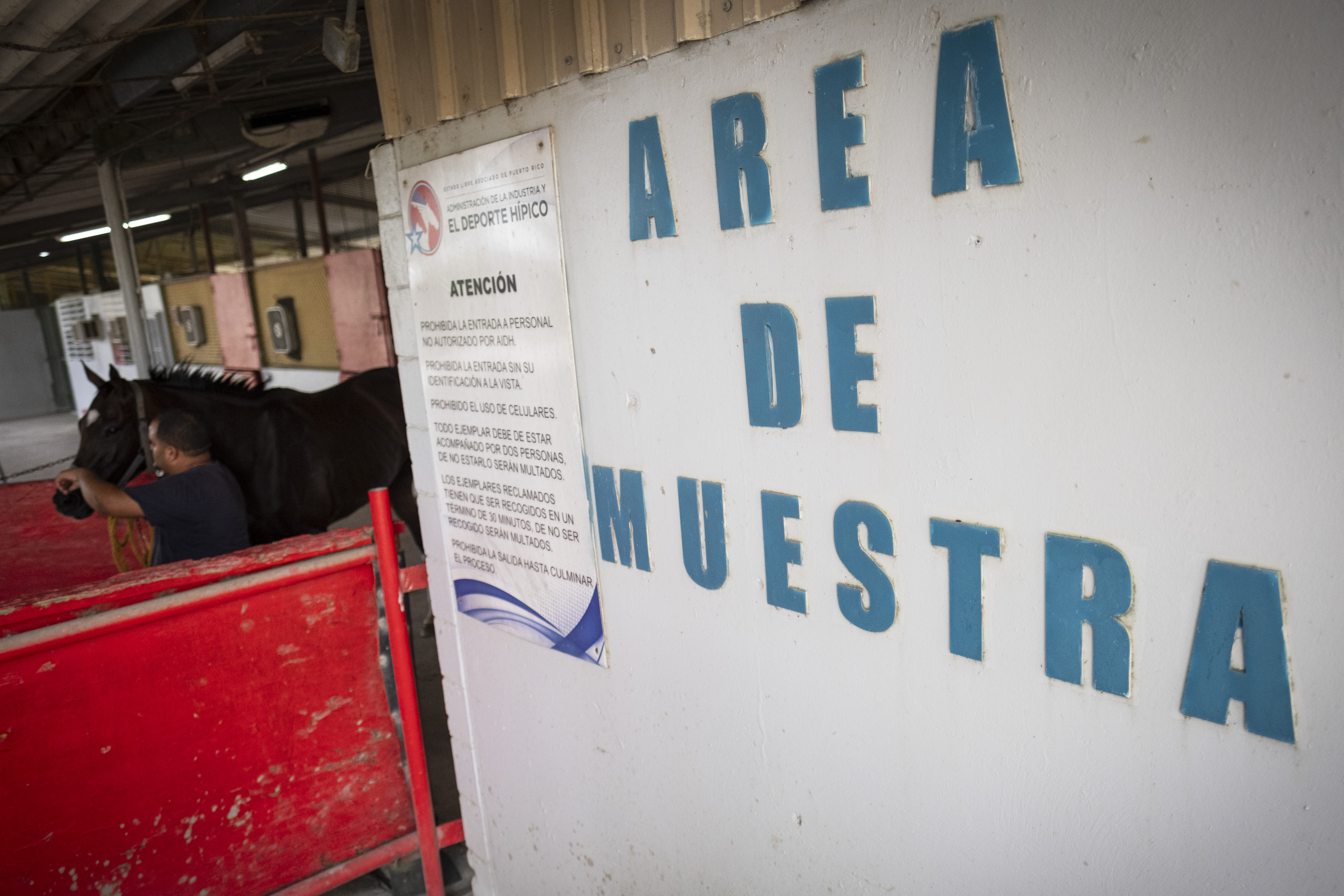

Gracias por el artículo.
Pero por qué no se da pública esta información a la prensa de Puerto Rico.
Todos tienen derecho a trabajar para su sustento y el de su familia, pero no haciendo daño a los animales, a los dueños de establos y sobre todo al deporte hípico, que además de ganar dinero, es un excelente deporte para sus fanáticos, que no sólo son apostadores.
Gracias por su atención